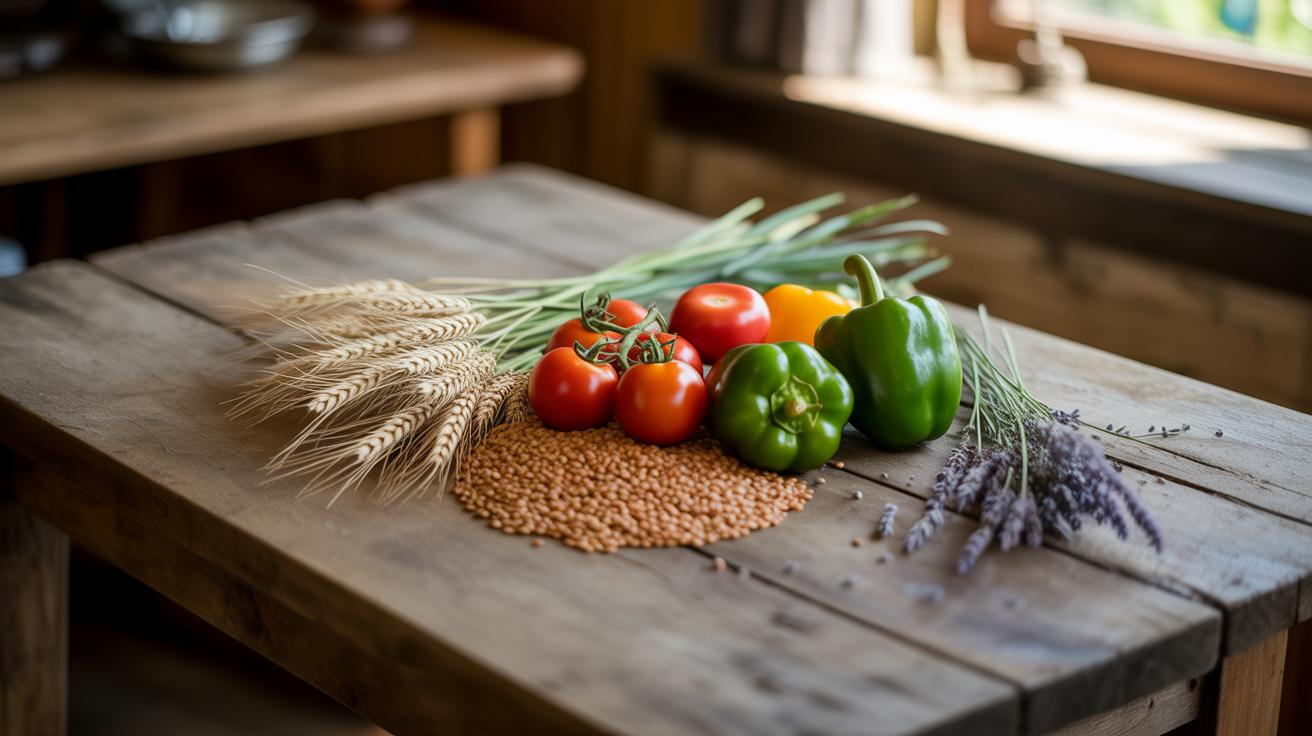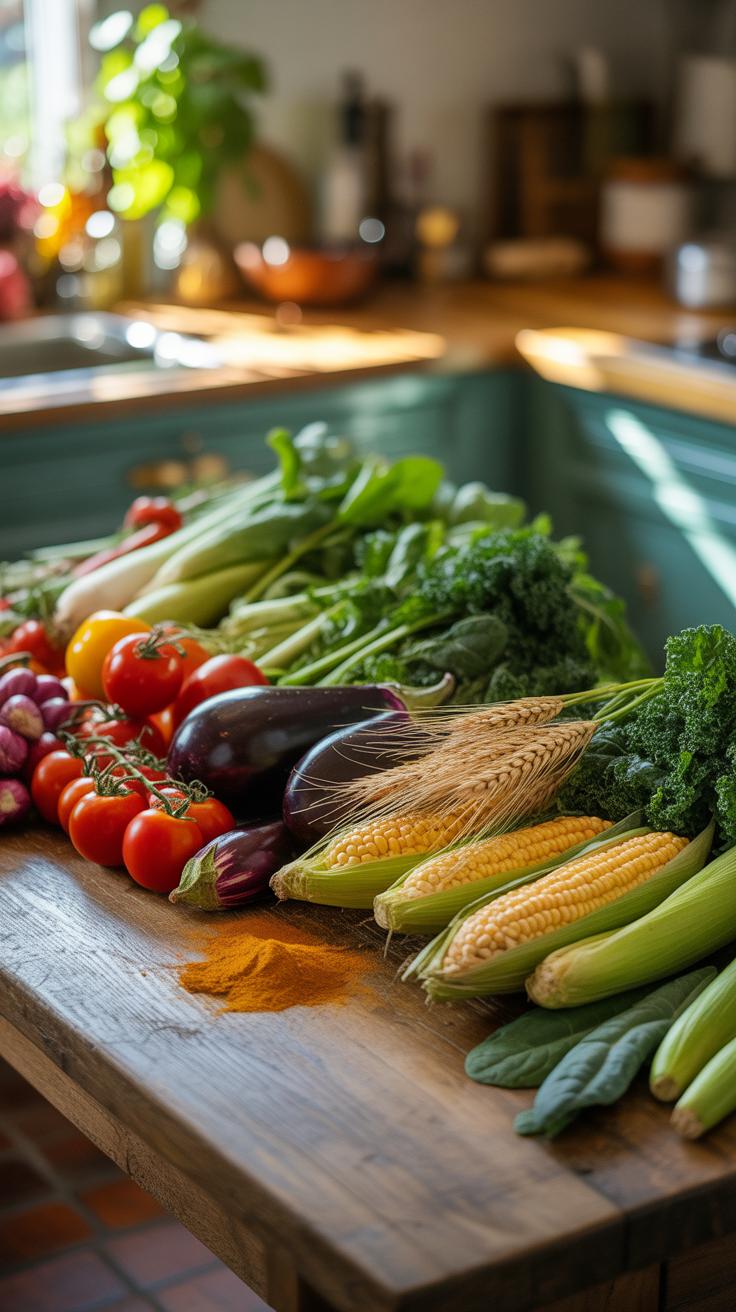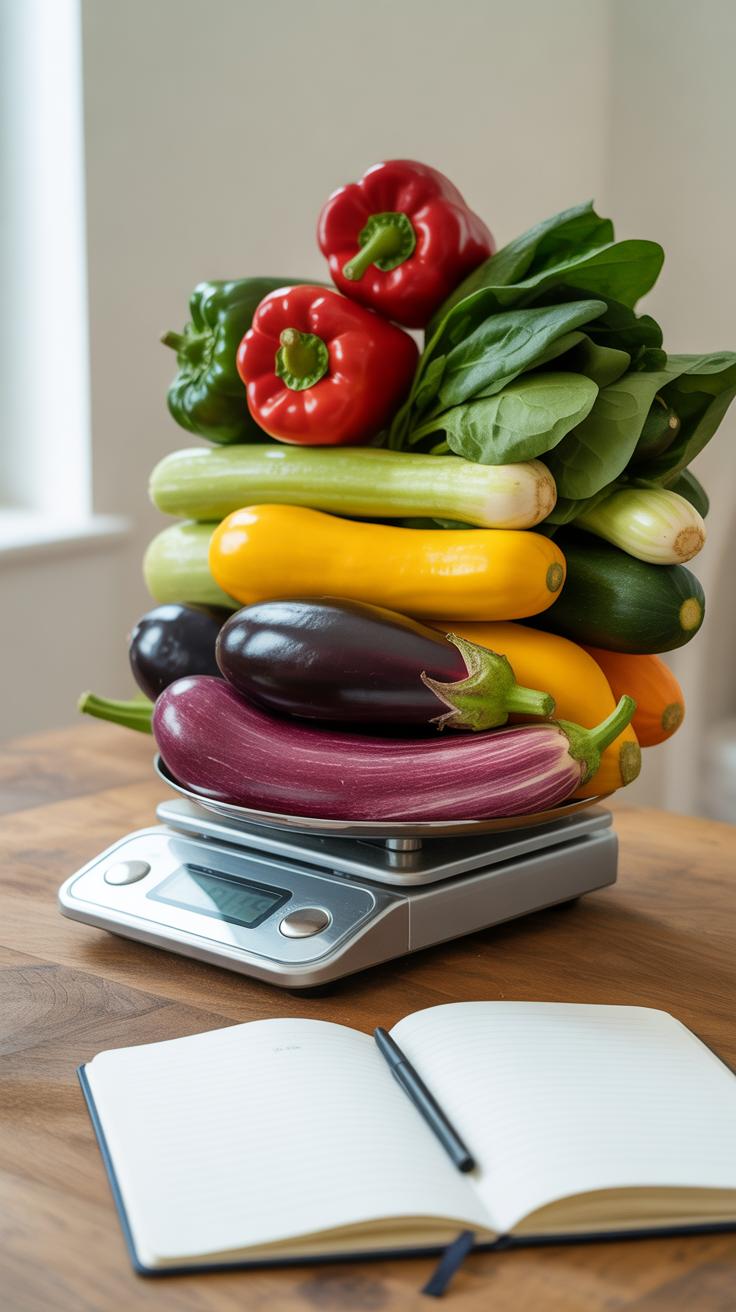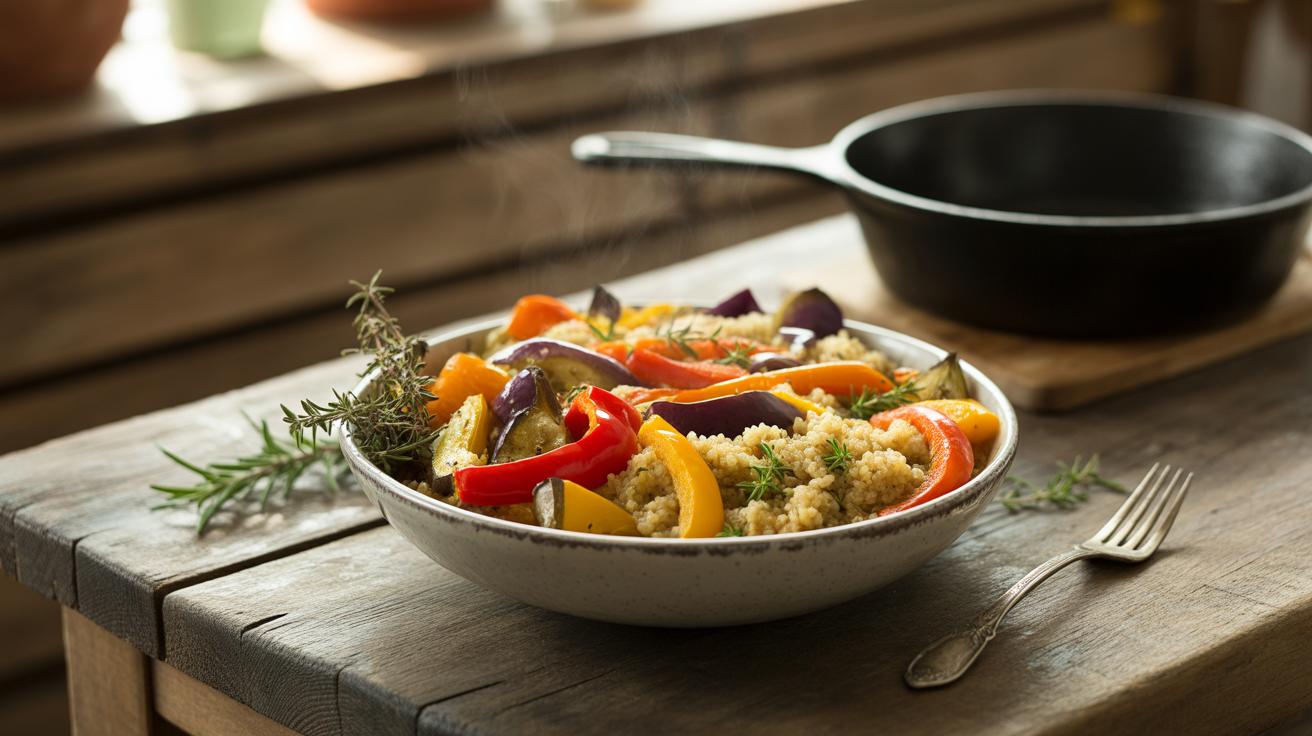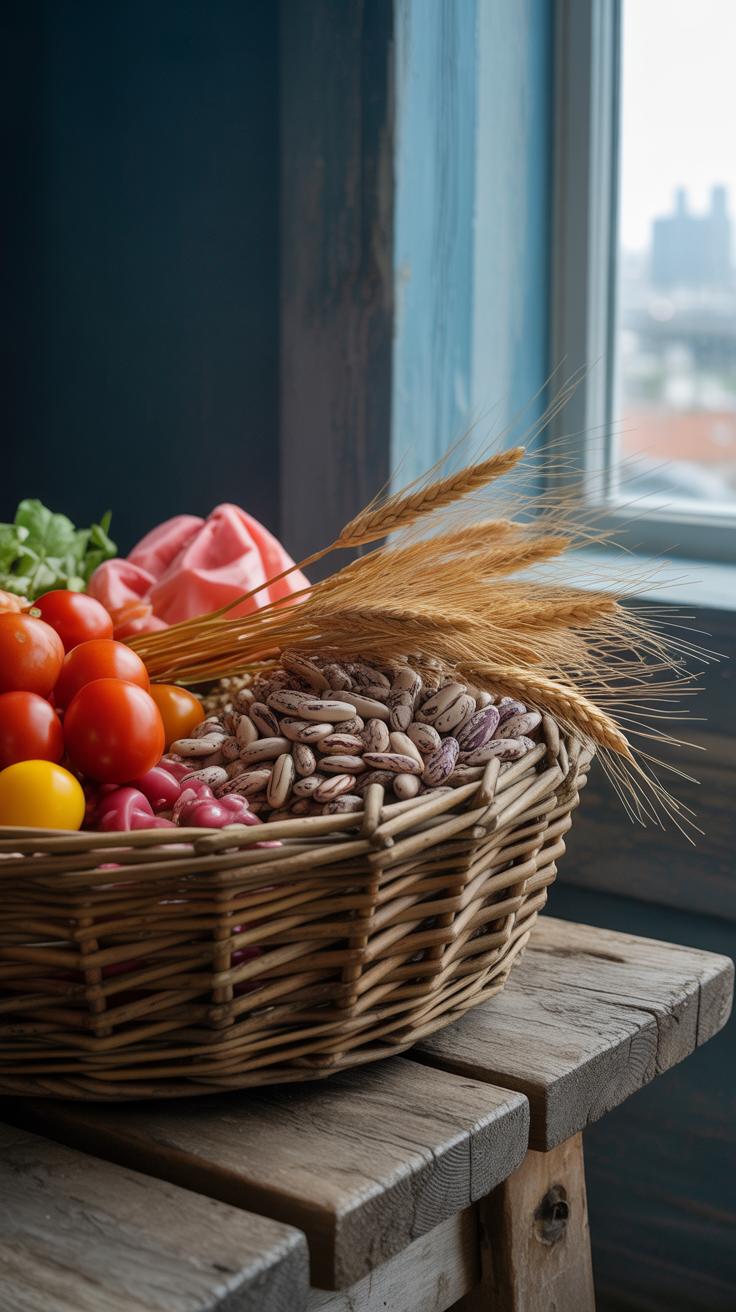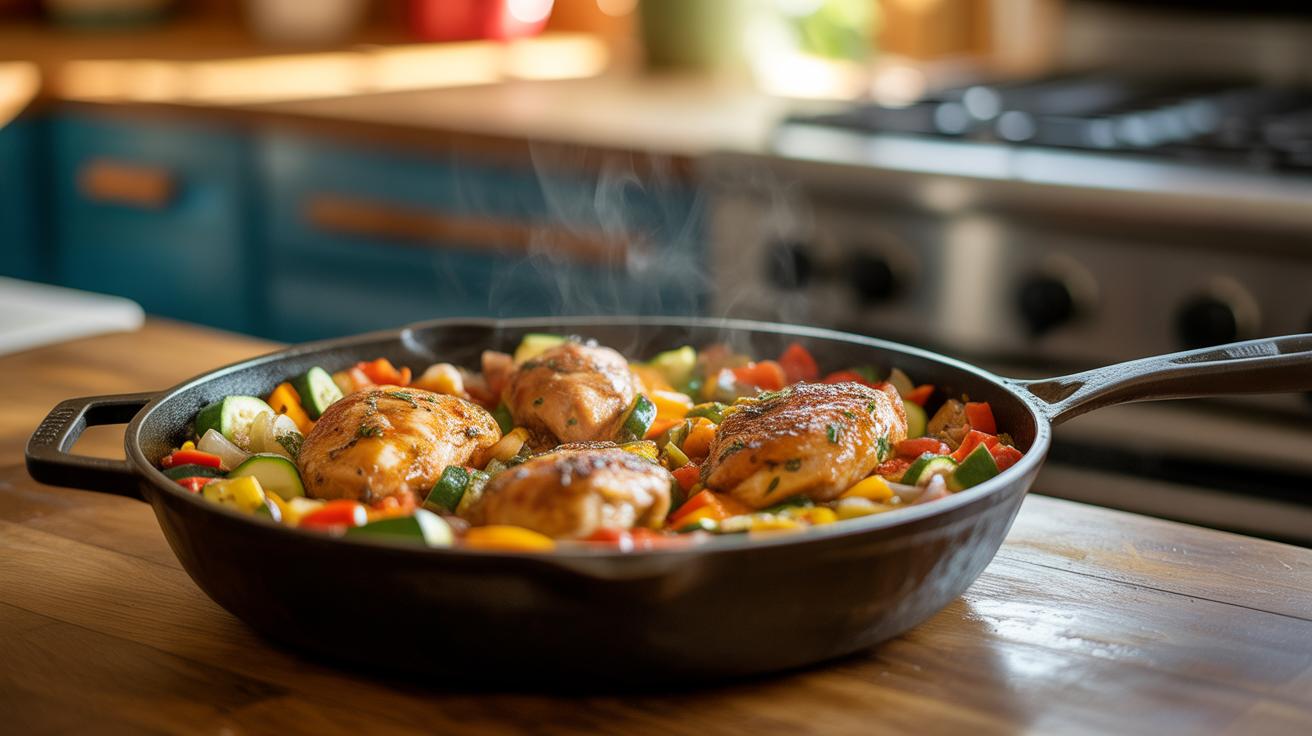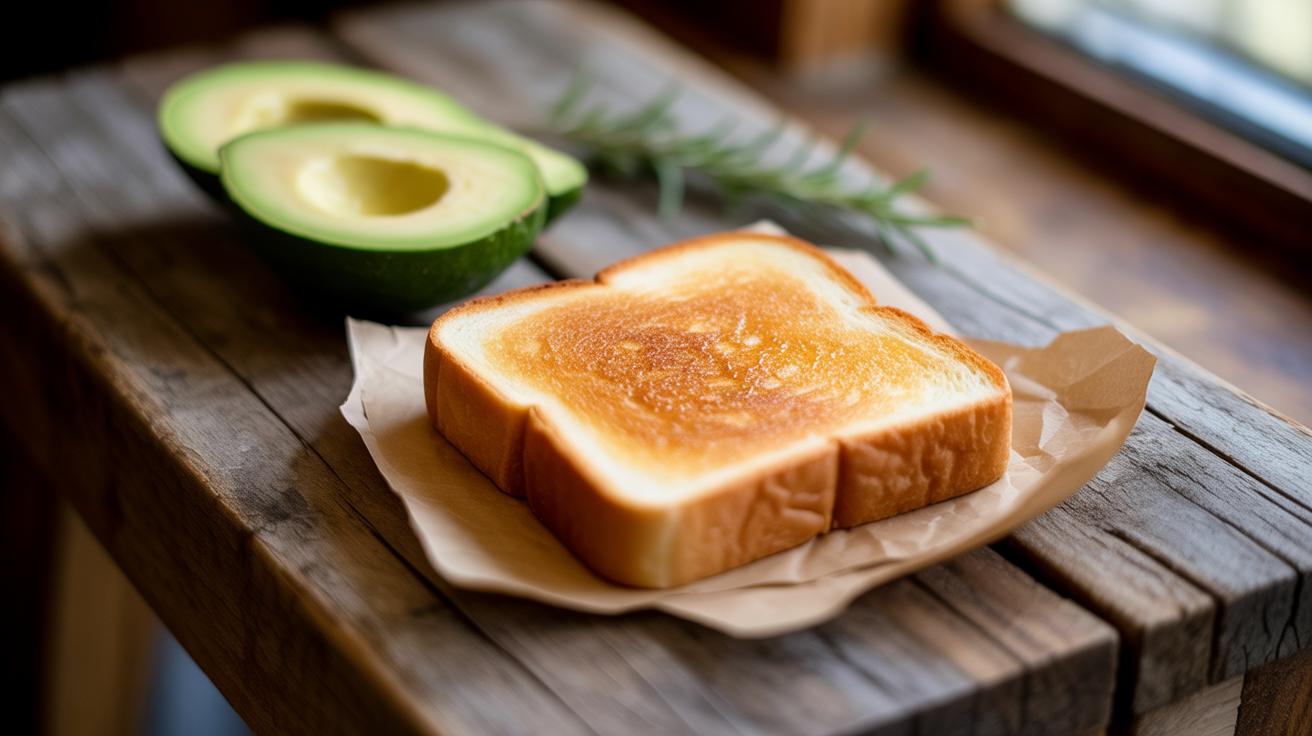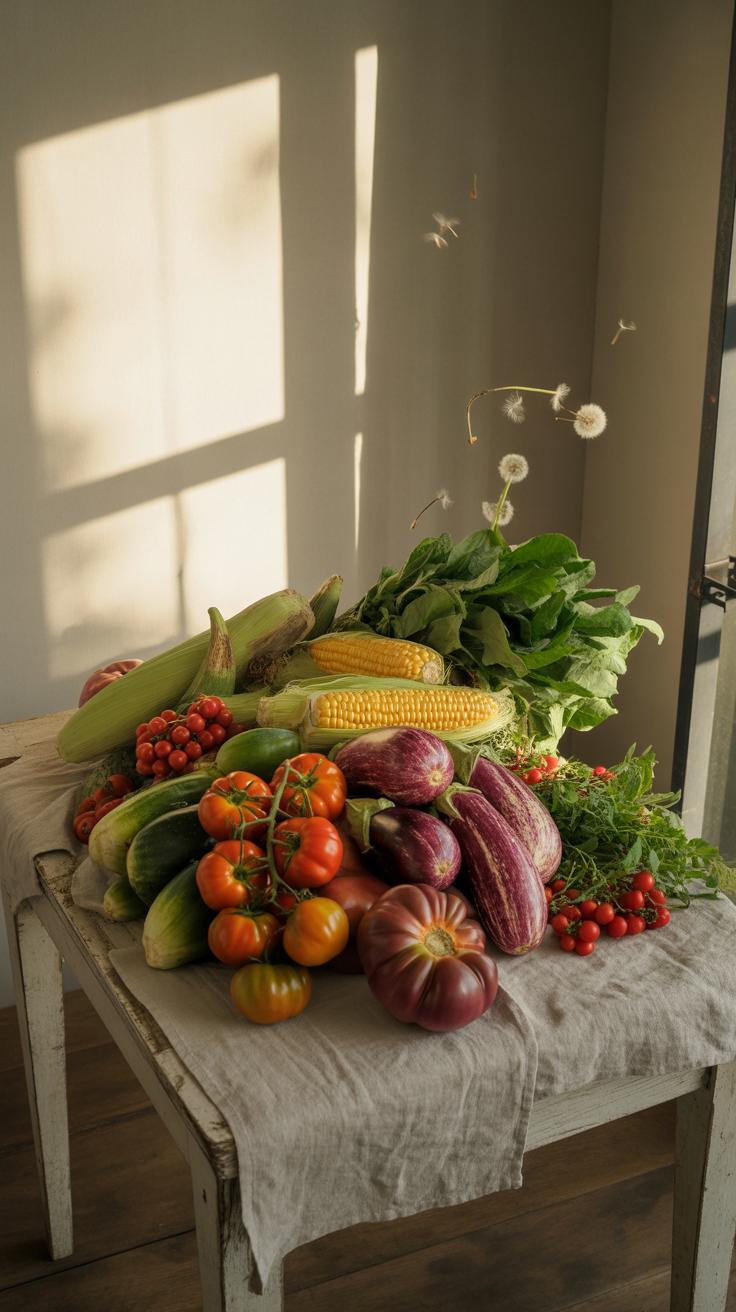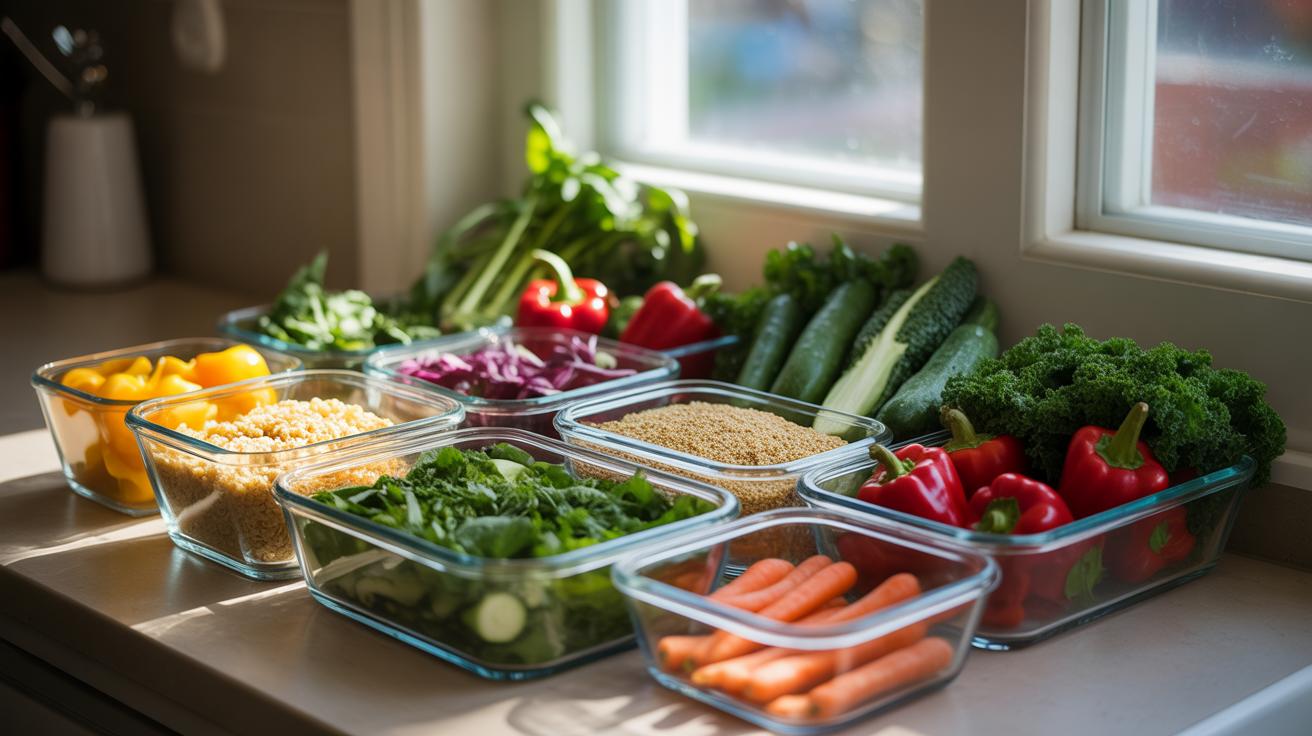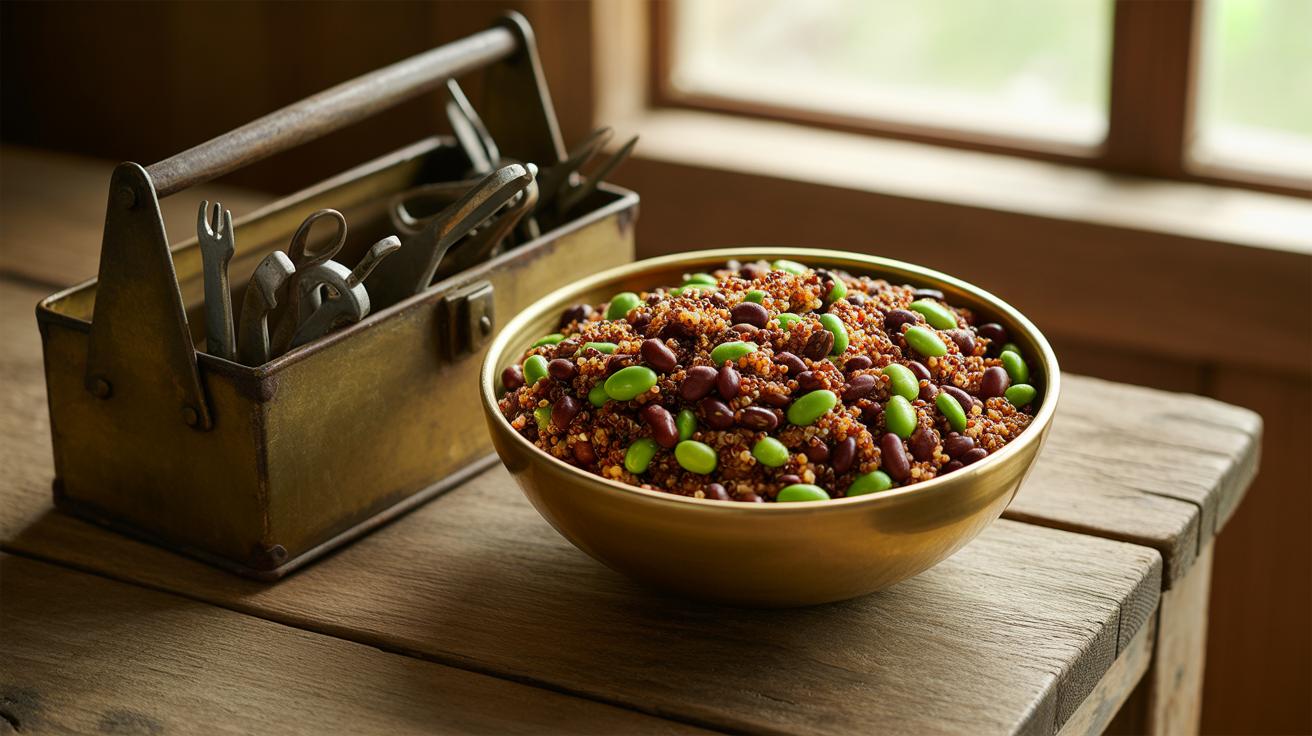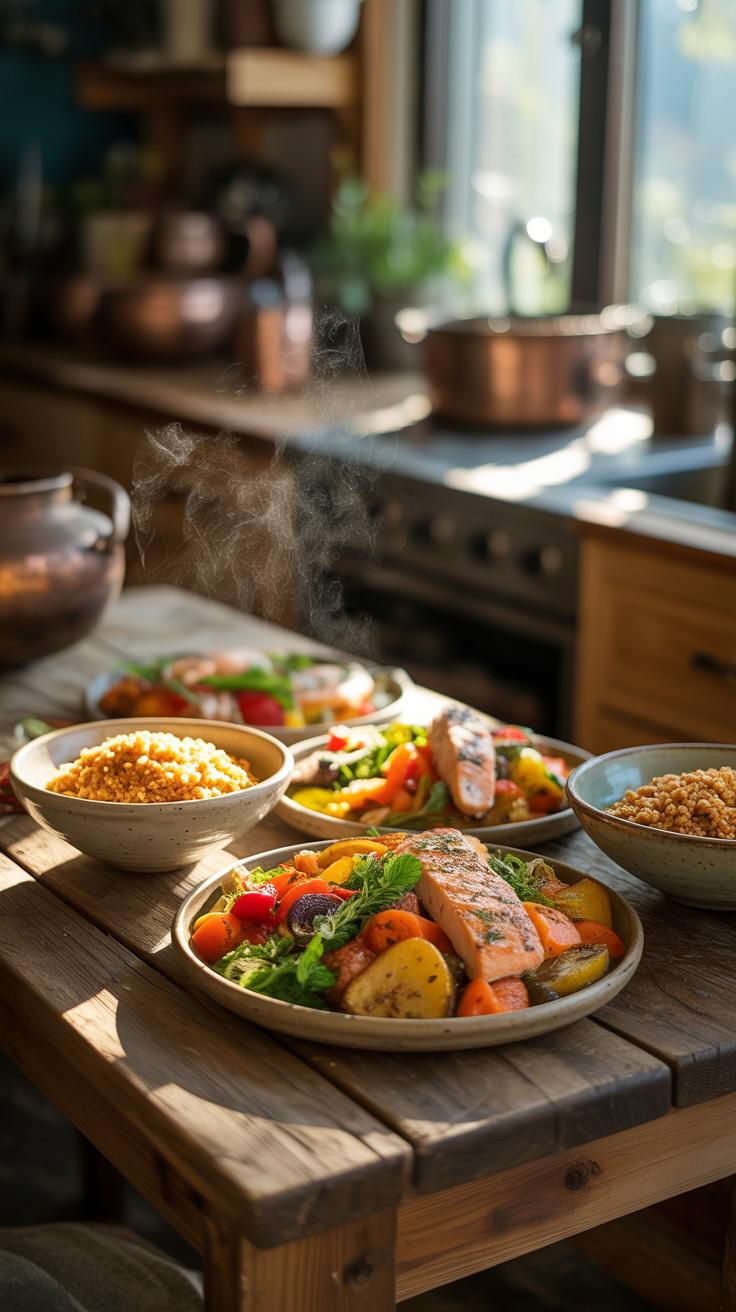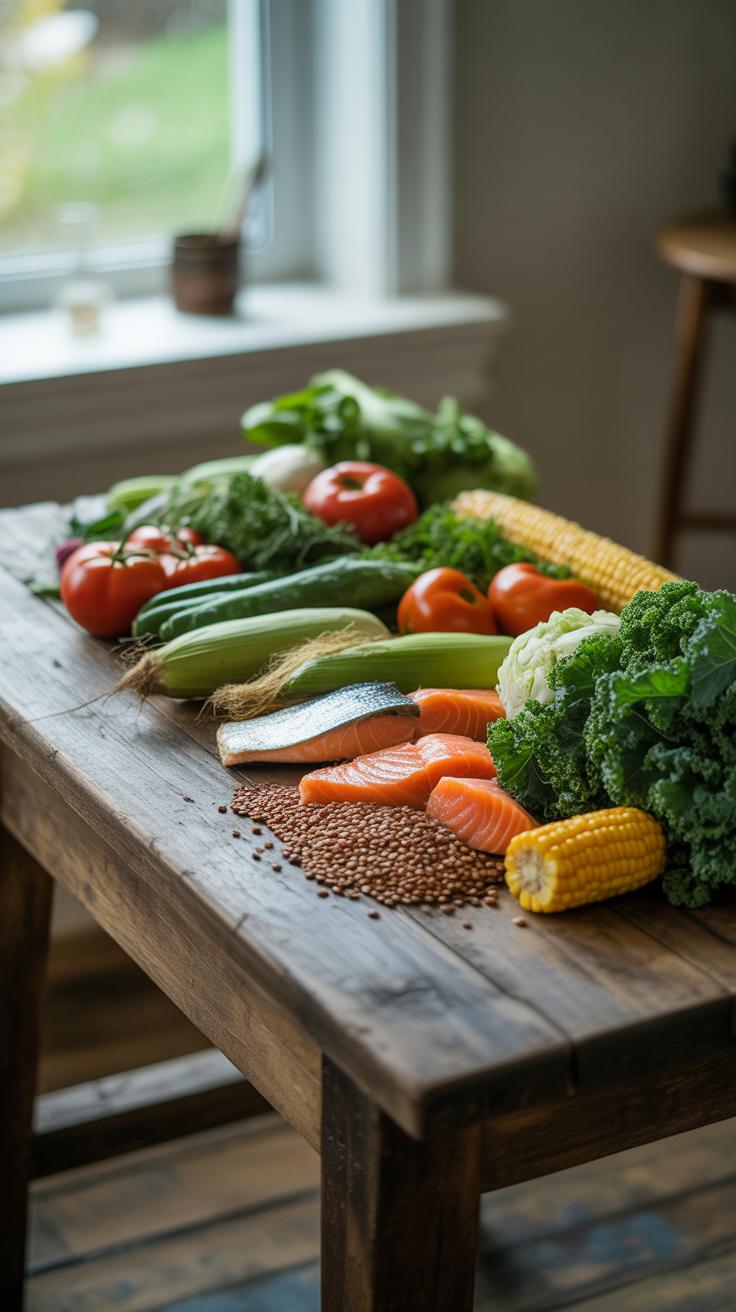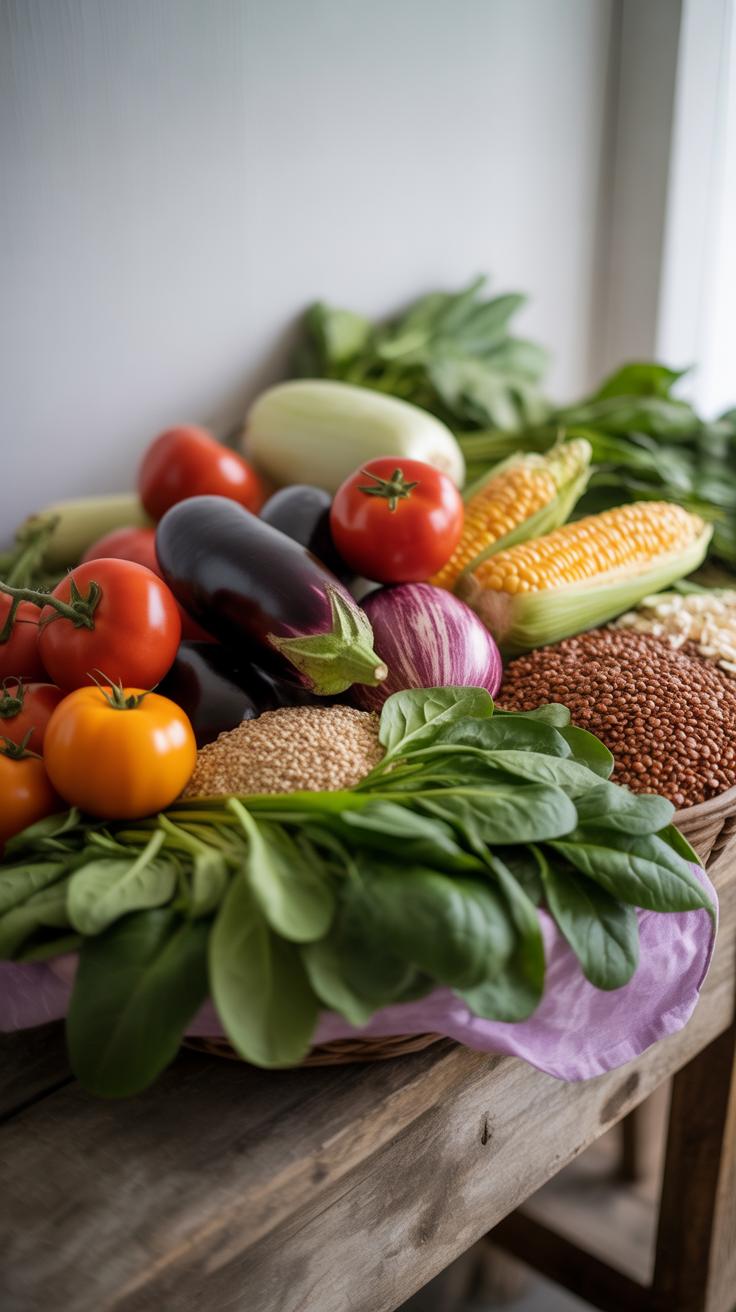Introduction
You want to eat balanced meals but have only $50 each week for groceries. Building meals that have the right mix of protein, fats, and carbs can feel tough on a tight budget. But careful planning and smart shopping can help you do this well.
This article guides you through making balanced meals that meet your needs while staying within your $50 grocery limit. You will learn what foods to choose and how to shop wisely, so your meals are healthy and affordable every week.
What Makes a Balanced Meal
A balanced meal includes several key parts working together to keep you going. You need protein, carbohydrates, fats, vitamins, and minerals. Each plays a role, and skipping one might leave you feeling sluggish or weak. For example, protein can come from chicken or beans, carbs from rice or potatoes, and fats from oils or nuts.
Vegetables and fruits bring vitamins and minerals, which are less talked about but just as crucial. Think of spinach for iron or oranges for vitamin C. These nutrients help your body with everything from healing wounds to keeping your mind sharp.
Why bother with balance every day? Well, a meal with just one or two groups might fill you up but won’t give steady energy or support your body’s needs. Balance keeps your energy stable and helps you recover after physical activity or stress. So, even if you’re on a tight budget, aiming for this mix is worth the effort.
How to Plan Meals on a Budget
Planning meals ahead can make a big difference when you’re working with just $50 a week for groceries. It’s tempting to just grab what looks good in the moment, but setting a simple plan first helps stretch that budget. You might start by jotting down a few meals you’d like to eat during the week, focusing on basic, balanced dishes using affordable ingredients.
Breaking down your $50 into categories—say around $15 for proteins, $15 for vegetables, $10 for grains, and the rest for extras like spices or a treat—gives some structure. I find this makes shopping less overwhelming and helps avoid impulse buys.
Meal prepping fits right in here. Spend a couple of hours cooking in one go, maybe on Sunday, so you’ve got ready-to-eat meals or components waiting. It doesn’t have to be complicated. For example, cooking a big batch of rice or beans means you can add those staples to various meals through the week without extra effort.
Leftovers can be a lifesaver. Don’t just reheat and eat the same dish. Try mixing things up: leftover roasted veggies can become a frittata or tossed into a salad. Leftover chicken? Maybe shred it for sandwiches or tacos. Finding new uses keeps meals interesting and cuts down on waste.
Creating a weekly grocery list tied to these plan ideas stops you from wandering the store aisles aimlessly. It encourages focus on foods that will work well together nutritionally and financially. It’s a bit of work upfront but pays off by saving money and stress later.
Best Budget Foods for Balanced Meals
When you’re building balanced meals on a tight budget, the goal is to get the most nutrition for each dollar spent. Beans, eggs, frozen vegetables, and whole grains often come up as favorites—and for good reasons.
Beans, whether dried or canned, pack protein, fiber, and minerals but cost pennies per serving. Eggs provide protein and essential fats with versatility—boil them, scramble them, or add to salads. Frozen vegetables usually hold nutrients well and often beat fresh ones in price, especially out of season. Whole grains like brown rice, oats, or barley fill you up with fiber and energy, lasting for many meals.
Choosing foods by nutrient density and shelf life helps stretch your budget. Think about how many meals one bag of lentils can make versus a pricier cut of meat. Sometimes, buying a bigger bag of grains or beans pays off despite the initial investment. You might wonder if fresh is always better—but frozen veggies can be surprisingly close in nutrients and store longer.
Top Protein Picks Under Budget
Proteins often eat up the biggest chunk of a grocery budget. Canned beans are a go-to since they’re ready-to-eat, affordable, and versatile. You can toss them into soups, stews, or salads easily without much prep.
Eggs usually cost less than other animal proteins per serving yet offer a complete protein source. They also come in handy whenever you need to whip up something fast and filling.
Peanut butter is worth mentioning here; it’s calorie-dense and packs protein and healthy fats. While it’s not a complete protein on its own, a little goes a long way on toast or mixed into sauces—sometimes a good alternative when time or money is tight.
Affordable Vegetables and Grains
Seasonal vegetables often cost less because they’re harvested at their peak and less likely to spoil quickly. Carrots, cabbage, potatoes, and onions tend to be budget-friendly staples year-round and can be quite filling.
Frozen vegetables are convenient and resist waste since you only use what you need. They’re sometimes easier to find in bulk, which can lower the price per serving.
Grains like brown rice or oats can anchor meals without breaking the bank. Buying in bulk generally reduces cost and helps you plan better, though it might feel like a bigger upfront spend. I often buy a large bag of oats because it lasts weeks and fits meals from breakfast to dinner.
Balancing what you buy against what you can store and cook makes a real difference. Too many perishable veggies, and you risk waste; too few, and meals lose variety. Finding the right balance is tricky but doable with a bit of planning and maybe some trial and error.
Where to Shop for the Best Deals
Finding quality food without breaking the bank often means knowing where to shop. Discount stores can be great starting points. They often carry staples like rice, beans, and frozen vegetables at lower prices than big grocery chains. The catch? Selection might be limited or brands unfamiliar, which could feel a bit like a gamble.
Farmers markets can surprise you with fresh, seasonal produce at prices that sometimes beat supermarkets. But remember, not every market is the same. Some might be pricey, especially for out-of-season items or organic goods. Still, if you time it right—like toward the end of the day—you might snag bargains from vendors looking to clear stock.
Bulk sections deserve a serious look too. Buying larger quantities of grains, nuts, or spices lets you pay less per unit, which helps stretch your budget. A drawback is the upfront cost and the need for proper storage. You don’t want to buy pounds of something if it ends up going to waste.
Using Sales and Discounts
Sales can change your grocery game, especially when paired with coupons. Checking store flyers weekly is almost a necessity if you’re shopping on a tight budget. Some stores rotate their discounts, so familiarizing yourself with patterns helps. But coupons for healthy foods? They’re rarer than junk food deals, which can be frustrating.
You might find digital coupon apps helpful. They often target fresh produce or whole grains. Still, the catch is that these coupons sometimes require you to shop at specific stores or meet a minimum spend. It’s worth weighing whether the time spent hunting down deals matches the savings gained.
Shopping at Different Stores
Each store type has its quirks. Supermarkets offer convenience and variety but can be pricier and tempting with impulse buys. Discount chains have lower prices but fewer options. Farmers markets provide quality but may challenge your routine, especially if hours or location aren’t the best.
What you choose might depend on your priorities that week—do you want to stock up, pick fresh veggies, or just grab a quick meal? Sometimes mixing visits between stores is the best way to balance cost and quality, even if it means a bit more effort. Have you tried this approach? It’s not perfect, but it usually works better than relying on one single place.
Meal Examples Within 50 Weekly Limit
Let’s look at a typical day that fits your $50 weekly budget but still tries to offer a decent balance of nutrients. Breakfast might be a bowl of oatmeal topped with a sliced banana and a spoonful of peanut butter. It’s simple, filling, and provides carbs, protein, and some healthy fat—all from affordable ingredients you can buy in bulk.
For lunch, maybe a homemade lentil soup with carrots and spinach alongside a slice of whole wheat bread. Lentils are not just cheap; they also pack protein and fiber, which helps keep you full. Vegetables add necessary vitamins and minerals without pushing the cost up too much.
Dinner can be roasted chicken thighs with a side of roasted potatoes and steamed green beans. Chicken thighs tend to be cheaper than breasts, and you get more flavor. Paired with inexpensive starches and veggies, the meal stays balanced but won’t break your budget.
What’s tricky is that no one day will be perfectly balanced in every nutrient, but more important is the overall pattern through the week. And just maybe, that small trade-off between cost and variety is worth that extra meal or snack you wouldn’t otherwise have.
Simple Balanced Breakfasts
Breakfast doesn’t have to be elaborate to be nutritious. A few ideas tend to work well on budgets and give you decent energy for the morning:
- Plain yogurt mixed with frozen berries and a sprinkle of granola or oats.
- Scrambled eggs with toast and a side of fruit like an apple or orange.
- A smoothie made from banana, peanut butter, and milk or water—quick, cheap, and filling.
These options combine protein, carbs, and a touch of fat, helping you start the day without needing fancy ingredients. Sometimes, I find repeating a simple breakfast during the week actually helps me stay on budget and avoid waste.
Lunch and Dinner Ideas to Save
For midday and evening meals, focusing on a protein source with veggies and grains tends to work well cost-wise and nutrition-wise. Try these approaches:
- Stir-fry using frozen mixed vegetables, tofu, and rice. Frozen veggies reduce spoilage, and tofu is a low-cost protein choice.
- Beans and rice tossed with sautéed onions, garlic, and some canned tomatoes—a plant-based combo that’s filling and versatile.
- Baked potatoes topped with cottage cheese and steamed broccoli, mixing starch and protein inexpensively.
Mixing plant and animal proteins gives you more options and can help spread your spending. It can feel a bit repetitive at times—there’s no denying that—but changing spices or sauces might give the meals a fresh touch without extra cost.
Common Mistakes in Budget Meal Building
One common mistake people make when building budget meals is leaning too heavily on processed foods. Sure, they’re quick and often look cheap at first glance. But relying on them too much means missing out on important nutrients and more often than not, it ends up costing more in the long run—think extra trips to the doctor or feeling sluggish. Also, processed items usually have lots of added sugars and unhealthy fats, which aren’t exactly what you want your body living on.
Another slip-up is ignoring variety. Sticking to the same few ingredients might seem easier or cheaper, but your body needs a range of vitamins and minerals to stay healthy. Skipping vegetables is especially common, maybe because fresh ones seem pricier or perish quickly. Still, leaving out vegetables often makes meals less filling and less nutritious. It’s worth experimenting with frozen or canned veggies—they can be wallet-friendly and last longer.
It’s also tempting to cut corners by going for the absolute cheapest foods without thinking about quality or balance. For example, grabbing only white bread, instant noodles, or soda might save money for a bit, but those choices miss key nutrients and can hurt your health over time. Instead, consider simple swaps—like brown rice instead of white, or dried beans instead of canned ones—to keep costs down without sacrificing nutrition.
Missing key nutrients is easy if you don’t plan meals that cover all food groups. Not enough protein, fiber, healthy fats, or whole grains can leave you feeling hungry or low on energy. Simple habits might fix this, like adding an egg or a handful of nuts, tossing in some leafy greens, or cooking grains in bulk to sprinkle into meals.
What parts of your current shopping or cooking habits might be holding you back from better meals? Sometimes small changes or being mindful about variety can make a noticeable difference in health—and your budget.
Tools to Track and Improve Your Meals
Keeping an eye on your grocery spending and nutrition can feel like a chore. But using a few simple tools might make it easier than you expect. Tracking what you buy and what you eat helps you spot patterns—maybe you’re overspending on snacks or missing out on key nutrients without realizing it. Even a basic notebook or chart can work if you don’t want another app. Writing down prices and ingredients forces you to slow down and think.
Budget Tracking Apps
Some apps are designed just to help you track grocery expenses quickly. For example:
- Mint: Connects to your bank and tracks spending, so you can set a grocery budget and check it at a glance.
- Goodbudget: Uses the envelope system to divide funds by category, including groceries. It’s simple and visual.
- AnyList: Great for making shopping lists but also lets you see prices and keep notes on where to find the best deals.
These apps aren’t perfect, but they keep costs visible. When your grocery tab suddenly spikes, you know before it’s too late.
Checking Nutrition Balance
Making sure your meals cover all essential nutrients doesn’t require a degree in nutrition. You can follow simple visual guides or checklists. For instance, think of each plate in terms of these components:
- Protein: Beans, eggs, chicken, or tofu.
- Vegetables: A colorful variety—greens, reds, yellows.
- Carbohydrates: Whole grains or starchy veggies like potatoes.
- Fats: Healthy oils, nuts, or avocado.
- Fruits: For vitamins and sweetness.
Keeping this rough balance in mind—and jotting down what you had for a few days—can show gaps or excesses. Maybe you love carbs but forget fats, or rely heavily on one veggie only. Tracking allows small fix-ups over time, which really adds up.
Adjusting Meals for Family Size and Needs
Stretching a $50 weekly grocery budget means you have to tailor meals carefully to how many people you’re feeding. If you’re cooking for one or two, ingredients might last longer or you can make smaller portions. For bigger families, bulk buying and larger batches become essential. But scaling isn’t just about multiplying or dividing; it’s also about balancing portions so amounts don’t get wasteful or scarce.
Try this approach: if a recipe serves four, but you’re cooking for six, multiply each ingredient by 1.5. It sounds straightforward, but watch out for spices or seasonings—they don’t always scale up linearly. I often start with a little less than the math says and adjust as I cook. Basic multiplication and division help, yes, but a pinch of judgment goes a long way.
Special diets or kids’ preferences can complicate things, but there are ways to handle this without costing more. For example, swap out meat for beans or lentils to keep costs low and satisfy vegetarians. For picky eaters, try separating main components—serve plain rice or roasted veggies alongside a saucier dish—and let them pick what to combine. Sometimes that small flexibility prevents wasted food and keeps everyone fed calmly.
Conclusions
Building balanced meals on a $50 weekly grocery budget is very possible with the right tips. Focus on nutrient-rich foods like beans, grains, and seasonal vegetables that cost less but add more value. Planning meals and shopping smart can stretch your dollars further.
Keep practicing these strategies to keep your meals varied and tasty without spending more. Balanced eating does not have to be expensive. You now have the tools and ideas to feed yourself well and save money each week.

